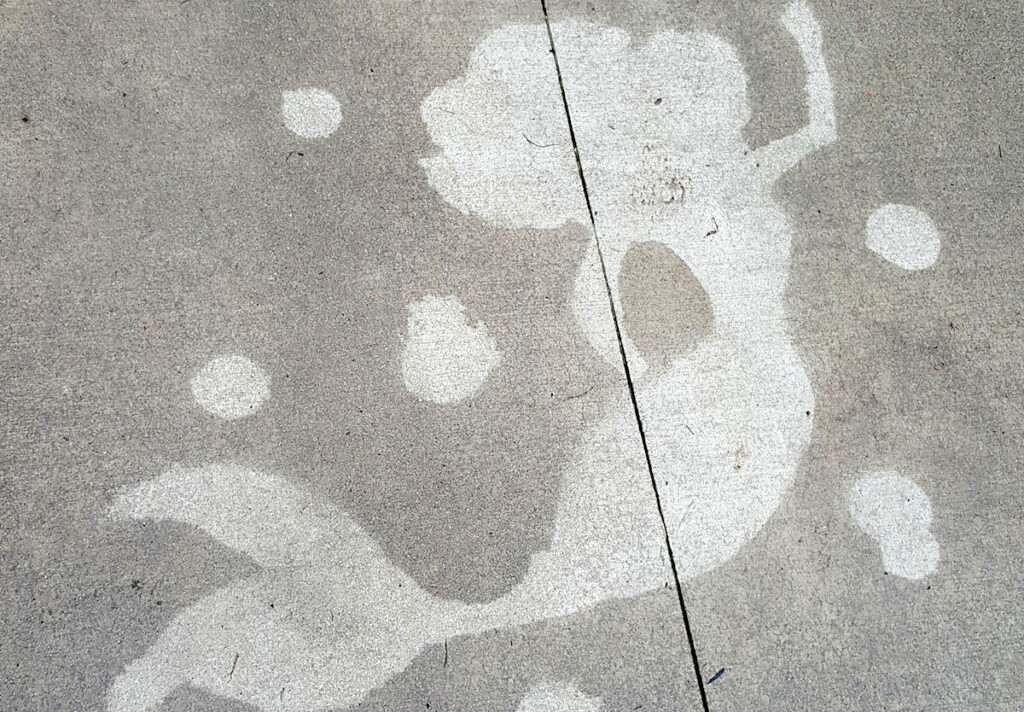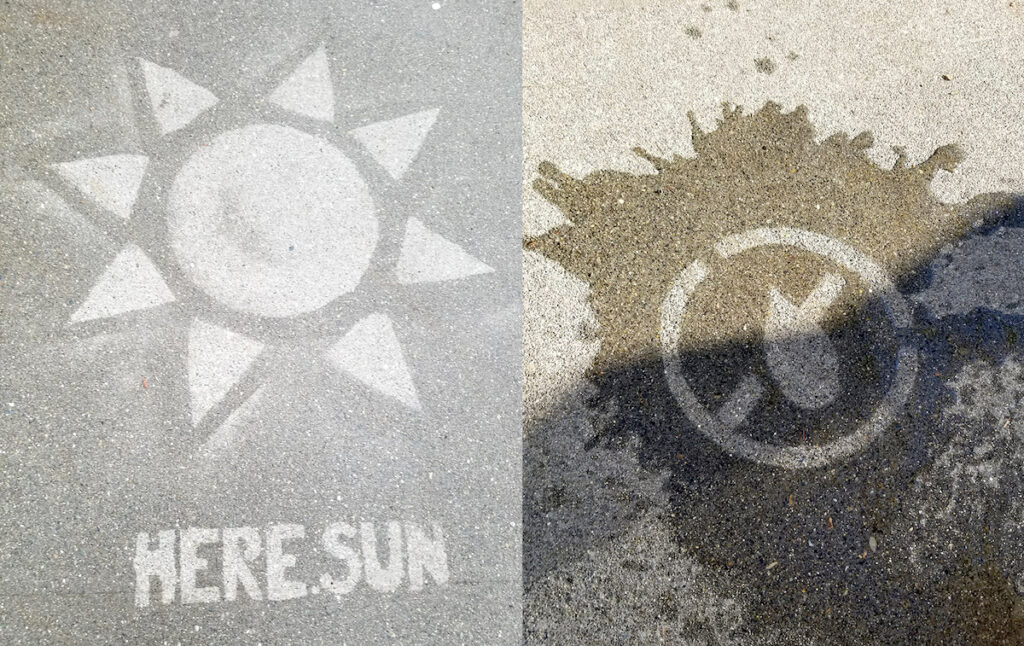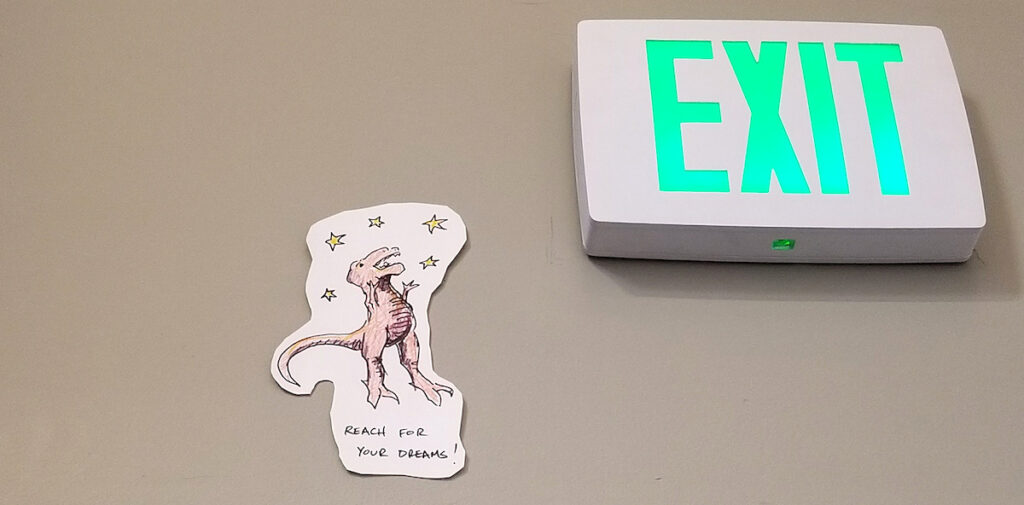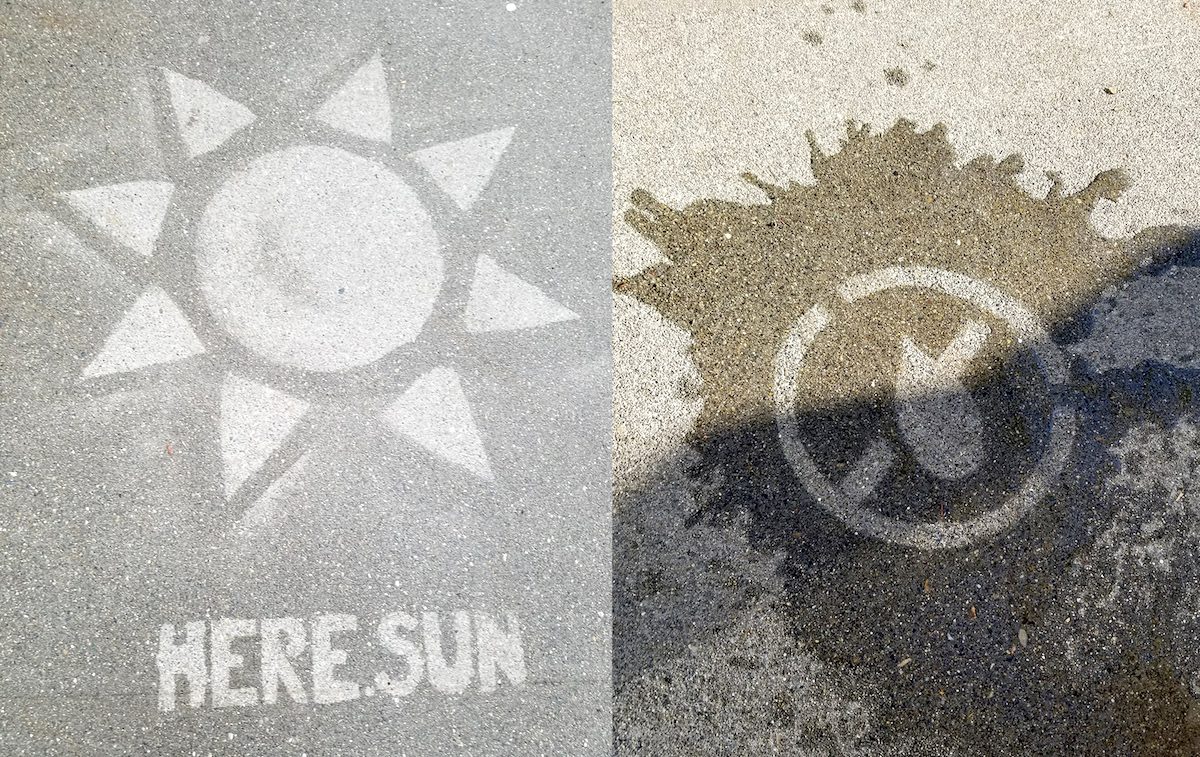When the general public thinks about how artwork is displayed, most picture a room with white walls, printed labels, and special spotlights. But, as art teachers, we have a lot of flexibility to get creative! Let’s open up the places that can serve as exhibition areas and start showing artwork where folks might not expect it.
Here are 2 of my favorite projects to place art in non-traditional spaces.
1. Rain-Activated Artwork
I live in Seattle, which is a pretty rainy place, especially in the winter. A local company called Rainworks decided to find a way to bring joy to folks when the weather gets dreary. They developed a hydrophobic spray that allows people to create murals on concrete. The catch? The murals only show up when they get wet!
The hydrophobic spray, which is available on their website, repels water. This means that when wet, concrete treated with the spray retains its color, while the areas that are not sprayed darken. The spray works especially well with stencils.

Here are the steps I take my students through:
- Give students the theme of “rain” or “water.” Have them sketch ideas.
Remind students that large, simple designs are best. The spray can bleed with too many tiny details leading to blotchy imagery. - Have students draw a full-sized stencil.
You’ll need cardboard or another non-permeable material to keep the spray from bleeding through. - Demo how to use cutting tools safely.
If possible, allow some practice time on scrap material. - Have students cut out their stencils.
- Go outside and spray the stencils!
Sometimes multiple coats are needed. In addition, the spray needs about 24 hours to cure fully, so applying it during clear and dry weather is important.
Remember to keep the messages light and fun. The idea is that when the secret mural is revealed, it brings a bit of joy and light into someone’s otherwise rainy and damp day. Plus, you can share your Rainworks with the company on their website! A bonus is that the spray is safe for the environment and non-permanent; the coating takes a few months to a year to wear away.
In my experience, students spent a good amount of time coming up with clever rain-related puns and decided to place them in high-traffic areas around our school. This included the entrance to the school and along the sidewalks immediately outside the building.

Once the pieces were installed, word spread about the secret murals and the school was abuzz with excitement! Students looked forward to seeing them appear, and the artists themselves began hinting about some of the more obscure locations of work to their friends, igniting searches for the pieces. It’s a continued favorite project for my middle school art students.
If you’re looking for even more ways to spark your creativity, don’t miss the AOE course Creativity in Crisis. Among other things, you’ll discover nine principles necessary for developing a culture of creativity and innovation and create an action plan to personalize student learning and ignite their creativity!
2. Guerilla Art
One of my favorite projects that I do is titled “Positive Forces.” It’s a great interim activity for those early finishers. The goal of the project is for students to create a fun cartoon figure who shares a positive message or idea for the school. Students place the pieces in spaces around the school to spread positive energy to others.

Here’s how to do it:
- Brainstorm
Have students start by sketching ideas or researching online for phrases or jokes that could brighten someone’s spirits. - Create
Once they’ve settled on the concept, they can work with color pencils or markers to make the image as bright as possible. (Note: Using cardstock when creating the pieces makes the piece stronger and helps it to pop a bit more from the walls. It also allowed the drawings to extend above or over spaces like window sills and ledges.) - Hang!
One of the most fun parts of the project for students was finding locations around the building to place their work. Unexpected spaces like walls above an entryway, on the ceiling, or in underused stairwells helped brighten normally dull spaces.
In my experience, it’s nice to try to time the installation to coincide with exam periods to give students an extra boost. While I check the pieces to make sure they are school-appropriate, I let students place the artworks on their own. This method may or may not work for your school. But, I would encourage you to try it as it adds to the element of surprise. I often find that many of the pieces remain up around campus, continuing to spread some positive cheer to others long past the conclusion of the class.
This project could also be paired with lessons on guerilla art and guerilla marketing to frame the extension of artworks outside the walls of the gallery and into unexpected spaces in the world.
Both of these projects bring a bit of joy to folks when they least expect it and couldn’t we all use a smile?
How do your students send positive vibes into the world with their artwork?
What examples of art in unexpected places can you find in your community?
Magazine articles and podcasts are opinions of professional education contributors and do not necessarily represent the position of the Art of Education University (AOEU) or its academic offerings. Contributors use terms in the way they are most often talked about in the scope of their educational experiences.





